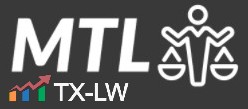Tax fraud is a serious crime that can result in harsh criminal tax penalties, including fines and imprisonment.
However, the specific sentence for a tax crime varies depending on the case and the judge presiding over it. In cases of tax fraud, the discretion of the judge can play a crucial role in determining the outcome of the case.
The case of United States v. Trupin, 05-2934-CR (2nd Cir. 2007), provides a prime example of the variability of tax crime sentencing.
Contents
Facts & Procedural History
According to the Second Circuit Court of Appeal, Trupin committed tax crimes by using several methods to avoid reporting over six million dollars in income over six years. He employed family members to claim ownership of specific assets, created fraudulent paper trails, utilized shell corporations and trusts, and sent expensive assets to the Vancouver Islands in Canada.
This resulted in charges for tax evasion under Section 7201 and making false statements under Section 1001. These are two of the most common tax crimes that the government pursues.
Tax Evasion & False Statements
Tax evasion is a crime that is set out in 26 U.S.C. §?7201. Section 7201 criminalizes any willful attempt to evade or defeat the payment of any tax due and owing. This includes failing to file a tax return, underreporting income, overstating deductions, and hiding assets or income. It can also include the failure to pay employment taxes. The government must prove that the taxpayer acted willfully, meaning that they knew they had a duty to pay taxes and deliberately chose not to.
If convicted under 26 U.S.C. §?7201, the offender faces a maximum sentence of 5 years in prison and a fine of up to $250,000. The government may also require the offender to pay the costs of the prosecution. Additionally, the offender may be required to pay any taxes owed plus interest and penalties.
18 U.S.C. §?1001 is a federal statute that criminalizes knowingly and willfully making false statements or concealing material facts in any matter within the jurisdiction of the federal government. This can include making false statements on tax returns or during an IRS audit. This often involves audits as the IRS uses the audit as a pretext for gathering information for a criminal charge. The government must prove that the taxpayer knowingly made a false statement or concealed a material fact with the intent to deceive.
If convicted under 18 U.S.C. §?1001, the offender faces a maximum sentence of 5 years in prison and a fine of up to $250,000. The government may also require the offender to pay the costs of the prosecution. Additionally, the offender may face civil penalties, including fines and interest on any unpaid taxes.
The Court Departed from the Guidelines
The district court judge, Judge McKenna, sentenced Trupin to seven months in prison and three years of supervised release, applying the federal sentencing guidelines for tax crimes. Judge McKenna voiced his dissatisfaction with the guidelines, stating, “this guideline is one of the worst I have ever seen.” The government appealed the lenient sentence, arguing that the sentence was too low.
During the appeal, the second circuit court overruled Judge McKenna’s opinion, stating that “sentencing policy is for Congress and the Sentencing Commission, not judges.” The court emphasized that it is uncommon for a circuit court to overturn a lower court’s factual determinations. However, in this case, Judge McKenna had exercised discretion to depart from the sentencing guidelines, which was allowed under a recent Supreme Court ruling.
If Judge McKenna had not expressed his negative opinion of the sentencing guidelines, the government would have struggled to uphold their appeal, and the lenient sentence would likely have been upheld. This raises the question of whether Judge McKenna used Trupin’s case to test the limits of how far a judge could depart from the sentencing guidelines under the recent Supreme Court ruling.
The Takeaway
Tax fraud is a serious offense that carries harsh criminal tax penalties. However, the specific sentence for a tax crime can vary depending on the case and the judge presiding over it. This case serves as an example of the variability of tax crime sentencing. It is important to consult with a qualified attorney if facing charges under either of the relevant statutes, 26 U.S.C. § 7201 and 18 U.S.C. § 1001, and to understand the potential consequences of conviction, including imprisonment, fines, and costs of prosecution.
In 40 minutes, we'll teach you how to survive an IRS audit.
We'll explain how the IRS conducts audits and how to manage and close the audit.


